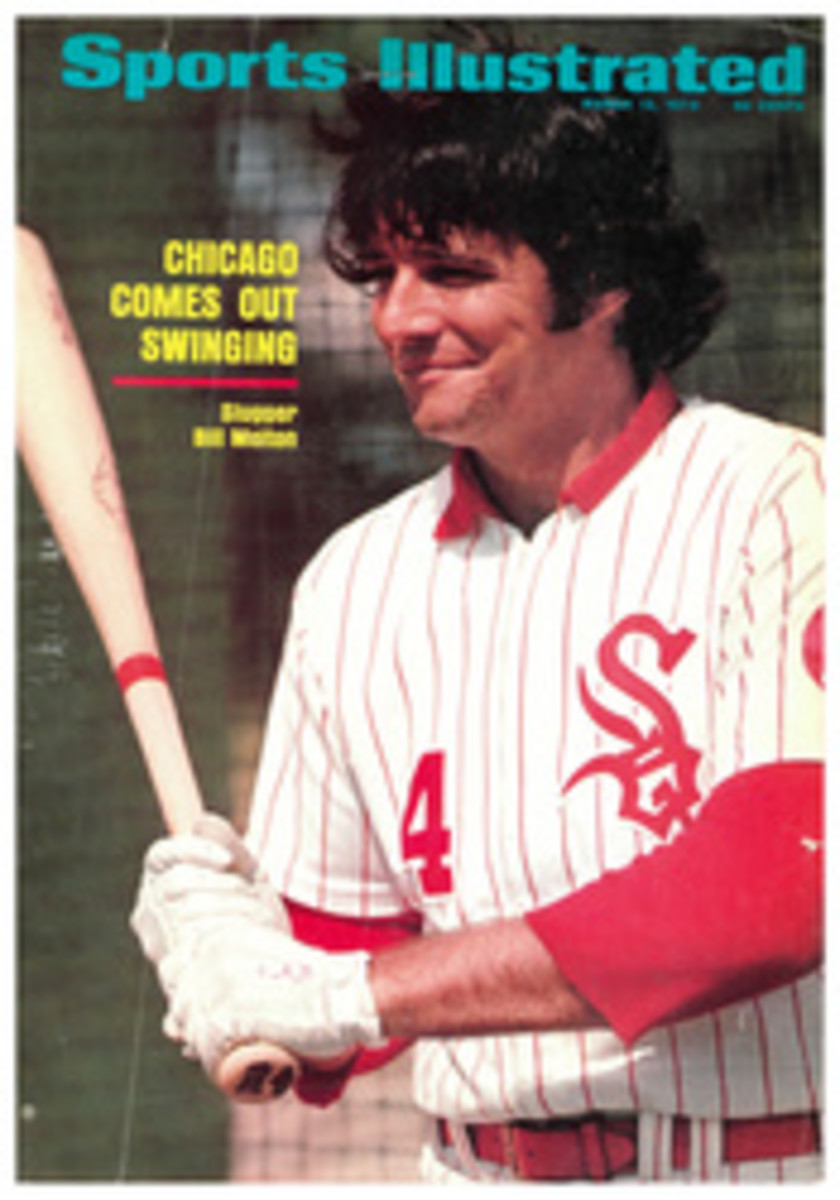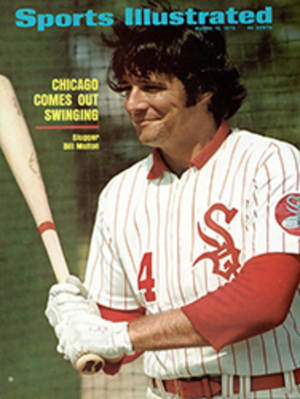
The back of his hand to the world
The taller of the two boys playing table tennis is by far more interesting to watch simply because he seems so remarkably awkward. His forehand is normal enough, but to hit a backhand he uses the same side of the paddle, rotates his arm 180° and punches rather than strokes the ball. The boy's name is Danny Seemiller and, despite his awkwardness and anonymity, at the U.S. World Team tryouts in Chicago recently he rose from 71st ranking to become the No. 1 player in the country. And he talks like No. 1.
"They said I couldn't win with my unconventional style, but after I wiped them up in Chicago they changed their minds. That's one of the reasons I've dedicated myself to table tennis. To prove I'm right." Seemiller, lithe and tall and rosy-cheeked, looking even younger than his 18 years, was back home for a few days in the house in which he had lived all his life in Carrick, a suburb of Pittsburgh. He was rallying with his brother, one of the five Seemiller children and a junior table tennis champion in his own right, in an old shed, remodeled by his father—a salesman—to resemble a clubhouse. There is an unpainted plywood bar in the back of the building. A ribbon of chairs lines the walls, surrounding a jerry-built practice table. Nearby stands a greenhouse in which are planted hundreds of gold and silver medals and trophies that sparkle and blink under the fertilizing rays of the afternoon sun.
"The more conventional players telegraph their backhand," says Seemiller. "Because of the wide motion of their strokes, I know where the ball is going before it gets there. But I can put my crazy punch anywhere."
In Chicago he did just that, astounding almost everybody, including Dal Joon Lee, the current U.S. champion who prior to this season had gone five straight years without losing a match to a U.S. player. After three days Seemiller had lost two matches and won 12 to become the youngest, least experienced and only native-born member—the others being from Korea, Thailand, Poland and Jamaica—of the team that will represent the U.S. in the World Table Tennis Championship in Sarajevo, Yugoslavia next month. "It was hard to take," said Seemiller, grinning across the room at his little brother. "These guys were once my idols, but that's all over. In Chicago I killed them."
In addition to his backhand, the young southpaw has a secret weapon, a special paddle with different rubber on each side—one designed for offensive spins, the other of antispin texture, causing the ball to dive and die. "I hide the paddle under the table before each serve and turn it around so even I don't know which side I'm hitting from. This way there's no way my opponent can know what I'm going to do. The Chinese have a similar technique, a paddle with sides of wood and rubber. But their shots are telegraphed by sound. This design is one step better."
With brown hair falling in thick clumps over his forehead and a smile only slightly marred by a chipped front tooth, the athletic Seemiller—he was a high school quarterback and track star—exudes that special confidence that comes with never having suffered seriously from defeat. "I started playing at a local club when I was 12," he says. "I didn't like people beating me, so I worked hard. After a year I could murder them all."
Seemiller continued protecting his adolescent honor and, in the process, reached the quarterfinals of the junior championships in England at 15. He won the Pennsylvania men's championship a week after returning from London and became the No. 1 junior player in the U.S. a year later. "But even then I was thinking about quitting," he says. "I wasn't as good as I thought I should be. When I got out of high school everybody figured I was through."
But he double-crossed the experts by qualifying in the Eastern eliminations for the world competition late last year. Then Del Sweeris, a veteran player and coach, one of few U.S. players to defeat a member of the Chinese team during its visit here, invited Seemiller to his table tennis complex in Grand Rapids. That was to be the key to success for the pupil, but perhaps the beginning of the end for the coach as a contending player. "I used to play only a couple of times a week," says Seemiller, "but up there we worked six hours a day. I never thought I could get so good. If it wasn't for Del, I'd be nothing, and if it wasn't for me, he'd be on the U.S. team. I won one of the five places. He made alternate—No. 6."
"I'm not too disappointed," says Sweeris. "I don't believe in this system where we send our five best players to compete in world matches. We have to look to the future. The team should be made up of young people who will benefit from the experience of international competition. That's the only way to lay the groundwork for a world championship team. Youngsters like Danny have the potential of getting better, but some of the people we send have already passed their peak." Although Sweeris mentions no names, he was obviously referring in part to Bernie Bukiet, a Polish national from New York who is 54.
Seemiller will spend considerable time prior to the world tournament practicing in Grand Rapids, with periodic thrusts across the country for tournaments and demonstrations. He will be running three miles each day, exercising and lifting weights for muscle tone.
Although he is technically preparing for the world tournament, his immediate challenge is the U.S. Open in Detroit next week. "A player from any country can compete, so even if I lose, it won't affect my ranking," he says. "But I'm not afraid. Dal Joon Lee has been selling equipment rather than training; he's falling apart. And he is too old; he's already 26. Alex Tarn, who was 14th in the world before he escaped from China, is the only guy with a chance. My problem is that everybody's going to be psyched up against me. I'm like UCLA in basketball. Everybody tries a little harder to put the No. 1 down."
He speaks with more respect, however, and with the characteristic modesty of the affable underdog when he considers his chances of winning the championship of the world. "It's hard to tell how far we're going to go," he says of the team. "We're not so good as a whole. Our ranking, 28th in the world, is nothing considering all the dinky countries competing."
In the world event the teams play in divisions of 12 based on the results from 1971 (world competition is held every other year). The U.S. is in the C Division, and may well win it.
"My own chances," says Seemiller of the individual world title, "depend on how well I do in the first couple of rounds. There are no divisions in individual competition. They match the best players against the worst, so near the end only the greats remain. This means there is a chance I might meet someone powerful from China, Yugoslavia or Sweden at the beginning. I could face Bengtsson or Kuang in the first round."
He says those names with a lilt to his voice and with the reverence of a clergyman extolling the virtues of a favorite saint. To Seemiller, the prospect of standing across the table from Li Chingkuang of China, who is 6' and weighs over 200 pounds, is comparable to having to run around an end protected by Mean Joe Greene. But he reserves his most lavish praise for world champion Stellan Bengtsson of Sweden. "Bengtsson is 5'5" and 135 pounds of lightning," says Seemiller. "He's got fantastic concentration. He is always intense, completely obsessed, no matter if he's tied at 19-19 or winning 19-1. That's the secret to good table tennis and the key for me. If I can keep calm and remember to take time to talk to myself and plan after each point, then I can win it. As it stands now, I'm not scared of anybody and nobody could beat me easily. If I can keep my concentration I have a chance to beat them all—including Bengtsson."
"About 85% of the competitors in the championship rely on top spin," says Sweeris, "and Danny's style is perfect against that. He stands right at the table and punches the ball back faster than anybody, and he can use the anti-top-spin side of his paddle whenever he likes. I think he is going to surprise a lot of people and come pretty close to taking it all."
Seemiller is affected by the sudden attention and respect he is receiving, and he assumes, perhaps with more authority than deserved, the assuredness of an established star. Yet if table tennis is to become a spectator sport of national popularity, an objective that Tim Boggan, president of the U.S. Table Tennis Association, and other officials are concentrating on, then Danny Seemiller could be the key.
It seems, at least in this country, that a star must be born before a sport is to flourish. Bobby Fischer and Gillie Jean King are prime examples. Seemiller is newsworthy enough, as to looks, as to skill and certainly as to manner, to attract attention to table tennis. "I won't make predictions for 1973," he says, "but by 1975 or at the latest '77, I'll be the world champ."
PHOTO
SEEMILLER SHOWS HIGH-FLYING FORM

